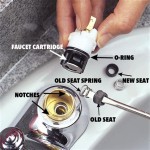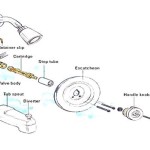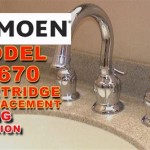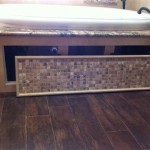How To Clear a Bathtub Drain Clogged With Hair
A clogged bathtub drain is a common household problem, frequently caused by the accumulation of hair, soap scum, and other debris. This blockage can lead to slow draining, standing water, and potentially unpleasant odors. Addressing this issue promptly and effectively prevents further complications, such as damage to plumbing fixtures and the growth of mold and mildew. A variety of methods exist to clear a hair-clogged drain, ranging from simple, readily available tools to more involved techniques requiring specialized equipment. The selection of the appropriate method depends on the severity of the clog and the tools available.
Preventing clogs is always preferable to dealing with them after they occur. Implementing preventative measures, such as using drain screens or strainers, regularly flushing the drain with hot water, and avoiding the disposal of hair and other debris down the drain, will significantly reduce the likelihood of future blockages. A proactive approach to drain maintenance minimizes the need for extensive cleaning and repairs, saving time and money in the long run.
Identifying the Cause of a Slow-Draining Bathtub
Before attempting to clear a bathtub drain, it is crucial to accurately identify the cause of the slow draining. While hair is a common culprit, other factors can contribute to or exacerbate the problem. Soap scum, mineral buildup from hard water, and small objects accidentally dropped into the drain can all contribute to blockages. Examining the drain and surrounding area often provides visual clues. Excess hair visible around the drain stopper is a strong indicator of a hair-related clog. A foul odor emanating from the drain suggests the presence of decaying organic matter, such as hair and soap residue. Furthermore, paying attention to the specific symptoms – for example, gradual slowing versus sudden stoppage – can inform the diagnosis.
The location of the clog also influences the approach to clearing it. Clogs close to the drain opening are generally easier to remove than those located deeper within the plumbing system. If the clog is suspected to be further down the drain, more aggressive methods may be necessary. In some cases, the problem might not even be within the immediate drainpipe. A partially blocked vent pipe, responsible for regulating air pressure in the plumbing system, can also cause slow draining. Although less common, issues with the vent pipe should not be ruled out, especially if other drains in the house are also experiencing similar problems.
Simple Methods for Removing Hair Clogs
Several simple methods can effectively remove hair clogs from bathtub drains. These techniques often require minimal tools and effort, making them a good starting point for addressing the problem. Begin by manually removing any visible hair or debris around the drain stopper. This simple step can often alleviate minor clogs and improve drainage immediately. A pair of tweezers, pliers, or even a gloved hand can be used for this purpose. Dispose of the collected debris properly to prevent it from re-entering the drain.
Using a bent wire hanger is another straightforward method. Straighten the hanger as much as possible, then bend one end into a small hook. Carefully insert the hooked end into the drain, probing and twisting to catch any hair or debris. Slowly pull the hanger back out, removing any collected material. Repeat this process several times until no more debris is retrieved. Be careful not to force the hanger too far down the drain, as this could potentially damage the pipes.
Pouring boiling water down the drain can sometimes dissolve minor clogs caused by soap scum and grease. However, it's essential to exercise caution when using boiling water, especially with PVC pipes, as excessive heat can potentially damage them. If your plumbing system uses PVC pipes, opt for hot tap water instead of boiling water. Pour the hot water slowly and steadily down the drain, allowing it to sit for a few minutes before flushing with cold water to check for improvement. Repeat this process as needed.
Using Chemical Drain Cleaners Responsibly
Chemical drain cleaners are readily available and can be effective at dissolving hair and other organic matter that causes clogs. However, it's crucial to use these products with caution, as they contain harsh chemicals that can be harmful to your health and the environment. Always read and follow the manufacturer's instructions carefully before using any chemical drain cleaner. Wear appropriate protective gear, such as gloves and eye protection, to prevent skin and eye irritation. Ensure adequate ventilation in the area to minimize exposure to fumes.
Avoid mixing different types of chemical drain cleaners, as this can create dangerous and potentially explosive reactions. Never use chemical drain cleaners if you have already tried other methods, such as using a plunger or a drain snake, without success. The combination of chemicals can create hazardous conditions. Follow the manufacturer's recommended dosage and waiting time. Do not exceed the recommended amount, as this can damage the pipes. After the recommended waiting time, flush the drain thoroughly with water to remove any remaining chemicals and debris.
Consider the environmental impact of chemical drain cleaners. Many of these products contain harsh chemicals that can contaminate water supplies. Opt for environmentally friendly alternatives, such as enzyme-based drain cleaners, which break down organic matter without harming the environment. These products may take longer to work than chemical drain cleaners, but they are a safer and more sustainable option. If you are concerned about the environmental impact of drain cleaners, consult with a plumbing professional for guidance on environmentally friendly alternatives.
Utilizing a Plunger Effectively
A plunger is a simple but effective tool for clearing many types of drain clogs, including those caused by hair. The effectiveness of a plunger depends on creating a tight seal around the drain opening and using the force of the suction to dislodge the clog. Before using a plunger, remove any visible debris from the drain opening. Add enough water to the bathtub to cover the cup of the plunger. This ensures that the plunger is submerged and can create a good seal.
Place the cup of the plunger directly over the drain opening, ensuring a tight seal. If necessary, apply petroleum jelly to the rim of the plunger to create a better seal. Push and pull the plunger up and down vigorously, maintaining the seal. Avoid lifting the plunger completely off the drain opening during each stroke. Continue plunging for several minutes, pausing occasionally to check if the water is draining. If the water starts to drain, continue plunging until the drain is completely clear.
If the plunger does not clear the clog after several attempts, consider using a different method. A plunger is most effective for clogs that are relatively close to the drain opening. For more stubborn or deep-seated clogs, a drain snake or chemical drain cleaner may be necessary. It's also important to ensure that the overflow drain is properly sealed, either with a wet cloth or duct tape, to prevent air from escaping and reducing the plunger's effectiveness.
Employing a Drain Snake (Auger)
A drain snake, also known as a plumbing auger, is a flexible tool designed to reach deep into drainpipes and break up or retrieve clogs. It is particularly effective for removing hair clogs that are located further down the drainpipe. There are various types of drain snakes available, ranging from simple hand-cranked models to motorized versions. The choice of drain snake depends on the severity of the clog and the frequency of use.
Before using a drain snake, remove the drain stopper. Gently insert the end of the drain snake into the drain opening. Feed the snake slowly into the drainpipe, rotating the handle or activating the motor as you go. When you encounter resistance, indicating the presence of a clog, continue to rotate the snake to break up or grab the blockage. Apply gentle pressure to push the snake through the clog. Avoid forcing the snake, as this could damage the pipes.
Once you have successfully broken up or grabbed the clog, slowly retract the drain snake from the drainpipe, carefully removing any accumulated hair or debris. Clean the drain snake thoroughly after each use to remove any remaining debris and prevent future clogs. Repeat the process if necessary until the drain is completely clear. Be cautious when using a drain snake in older plumbing systems, as the pipes may be more fragile and susceptible to damage. If you are unsure about using a drain snake, consult with a plumbing professional.
Preventative Measures to Avoid Future Hair Clogs
Preventing hair clogs is significantly easier and more cost-effective than repeatedly clearing them. Implementing a few simple preventative measures can dramatically reduce the frequency of drain clogs and maintain the health of your plumbing system. One of the most effective preventative measures is to use a drain screen or strainer over the drain opening. These devices catch hair and other debris before they enter the drainpipe, preventing them from accumulating and forming clogs. Regularly clean the drain screen or strainer to remove any collected debris.
Avoid washing hair down the drain whenever possible. Sweep or vacuum up loose hair from the bathroom floor and dispose of it properly. When showering or bathing, try to minimize the amount of hair that goes down the drain. Regular flushing the drain with hot water helps to dissolve soap scum and grease buildup, preventing them from accumulating and contributing to clogs. Pour hot water down the drain once or twice a week to keep the pipes clear.
Consider using enzyme-based drain cleaners as a preventative maintenance measure. These cleaners contain enzymes that break down organic matter, such as hair and soap scum, without harming the environment. Use enzyme-based drain cleaners regularly, following the manufacturer's instructions, to prevent clogs from forming. Regularly inspect the drain for any signs of slow draining or foul odors. Addressing these issues promptly can prevent them from escalating into more severe clogs. By implementing these preventative measures, you can significantly reduce the likelihood of hair clogs in your bathtub drain and maintain the health of your plumbing system.

How To Unclog Most Bathtub Drains By Removing Hair

How To Unclog Most Bathtub Drains By Removing Hair

How To Unclog Bathtub Drain Full Of Hair Stellar Plumbing

How To Clean Hair Out Of A Shower Drain 9 Easy Ways

How To Clean Hair Out Of A Shower Drain 9 Easy Ways

Top 5 Ways To Get Hair Out Of Your Drains

How To Unclog A Bathtub Drain Without Chemicals Family Handyman

How To Unclog Bathtub Drain Full Of Hair

How To Get Hair Out Of A Drain Comprehensive Guide

How To Clean Hair Out Of A Shower Drain 9 Easy Ways
Related Posts








